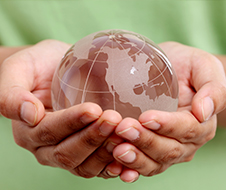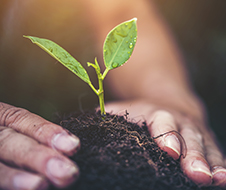Pollution Prevention and Resource Circulation
- Top
- Sustainability
- Promoting ESG Management to Support Sustainable Growth
- Environment
- Pollution Prevention and Resource Circulation
Pollution Prevention
Initiatives for Pollution Prevention
Chemicals are indispensable for maintaining and advancing human lives. However, they can pose harmful effects on human health and ecosystems, necessitating proper management. Based on our environment policy, SEKISUI KASEI Group strives to ensure the proper management, treatment, and recycling of chemicals and waste, contributing to the preservation of a rich ecosystem.
Resource Circulation
Initiatives for Waste Reduction and Resource Utilization
Our lives and business activities rely on finite resources. Recognizing the critical importance of addressing resource depletion and ensuring proper waste management and recycling, SEKISUI KASEI Group is dedicated to advancing these measures.
Guided by our environment policy, we are committed to minimizing waste from our business activities and promoting resource recycling, with the goal of fostering a sustainable circular economy.
Goals and Achievements
| Categories | Goals | Achievements for FY 2023 |
|---|---|---|
| Pollution Reduction and Prevention | Switching boiler fuel from heavy oil to gas reduces NOx, SOx, and particulates. | We switched the boiler fuel at one of our domestic facilities from heavy oil to gas to reduce pollutants. |
| Waste Reduction and Prevention | Reducing waste emissions through segregation for reuse and energy recovery incineration. FY 2030: Recycling Rate 99% (All Sites in Japan) |
We implemented measures to recycle product scraps instead of discarding them. Recycling Rate: 97% (All Sites in Japan) |
| Reduction and Prevention of Resource Utilization | Replace all virgin materials in SEKISUI KASEI Group's products with recycled, biodegradable, or biomass-derived materials. FY 2030: Recycled and biomass-based materials usage ratio of 50% or more. |
We established a new scheme to use recycled polyethylene materials and began applying them to various product packaging. Recycled and biomass-based materials usage rate: 18% |
Trends in Waste Emissions and Achievements Against Waste Reduction or Prevention Targets
| Categories | FY2020 | FY2021 | FY2022 | FY2023 |
|---|---|---|---|---|
| Waste Emissions (ton) | 12,606 | 12,855 | 12,749 | 11,281 |
| Hazardous Waste Generation (ton) | 14 | 11 | 14 | 10 |
| Waste Incineration and Final Landfill Disposal (ton) | 966 | 940 | 995 | 1,455 |
| Recycling Volume (ton) | 11,640 | 11,915 | 11,753 | 9,827 |
| Recycling Rate | 96% | 96% | 97% | 97% |
Scope of Aggregation: All sites of SEKISUI KASEI Group (Note: The recycling rate aggregation scope is all of the Group's sites in Japan.)
*Hazardous Waste: Specially controlled industrial waste and mercury-containing product waste.
*Trends in Wastewater Volume: Published on the Water Resource Conservation page on our website.
Number of Environmental Violations
Permits, Standards, Regulations
In fiscal year 2023, there were no violations or fines related to environmental regulations, including wastewater regulations.
Status of ISO 14001 Certification
SEKISUI KASEI Group has obtained ISO 14001 certification, the international standard for environmental management systems, primarily at its production sites. As of October 2024, there are 20 certified production sites, representing 30% of all production sites.
Utilization of Life Cycle Assessment"
SEKISUI KASEI Group recognizes the importance of reducing environmental impact and developing and designing products with consideration for limited resources throughout the entire lifecycle, from raw material procurement to usage, disposal, and recycling. By conducting Life Cycle Assessments, we promote evaluation and improvement of environmentally conscious product development from the research and development and design stages.
With “Eslen Beads RNW,” the use of recycled materials has significantly reduced CO₂ emissions from raw material procurement to manufacturing compared to conventional polystyrene. The evaluation results are as follows:
CO₂ emissions from raw material procurement to bead manufacturing: 56% reduction
CO₂ emissions from raw material procurement to bead manufacturing, through molding processing to molded products: 19% reduction
In addition to this, for other “Sustainable Star Product (environmentally friendly products),' we utilize Life Cycle Assessment evaluations and publish the effective results in catalogs and on our website.
Participation in Initiatives
We are actively promoting plastic resource circulation through our participation in the JAPAN Clean Ocean Material Alliance (CLOMA) and the working teams of the Japan Plastics Industry Federation.
Additionally, with products like “ESLEN Beads RNW” and “PIOCELAN RNW,” which utilize recycled materials, we are working with client companies to establish recycling systems, thereby contributing to waste reduction and resource circulation.
- * CLOMA : The Japan Clean Ocean Material Alliance is a platform aimed at solving the marine plastic waste problem by strengthening collaboration among a wide range of stakeholders across various industries and accelerating innovation.




